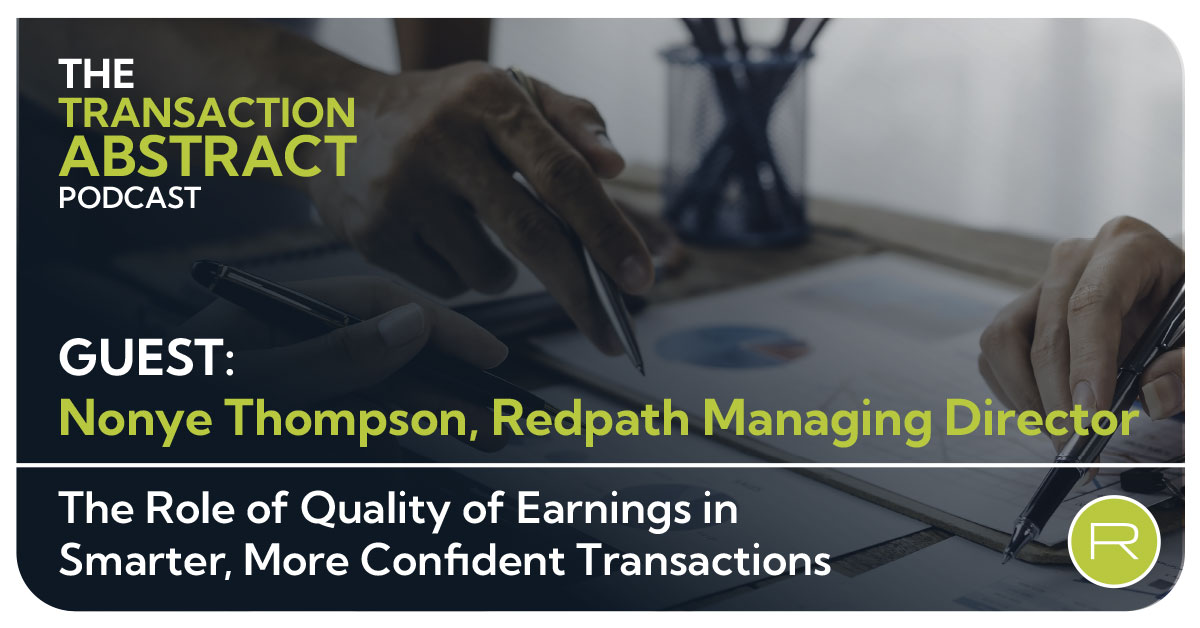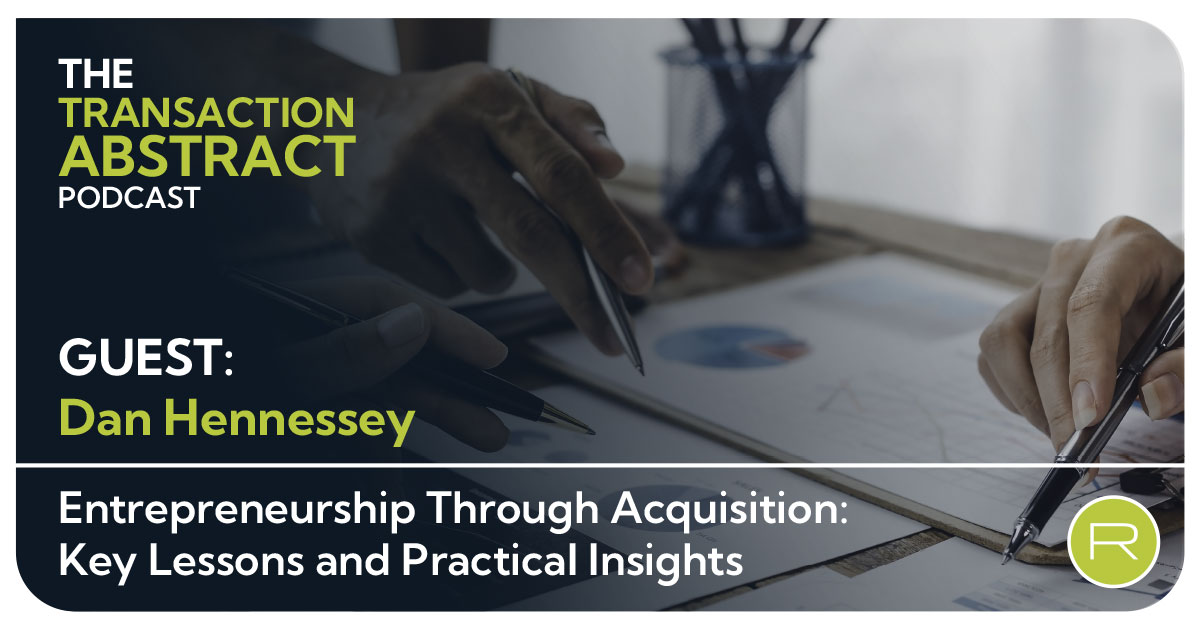The Role of Quality of Earnings in Smarter, More Confident Transactions
In this episode of The Transaction Abstract Podcast, Joe Hellman sits down with Nonye Thompson, Managing Director in Redpath’s Transaction Advisory...
3 min read
 Redpath and Company
:
Jun 10, 2021
Redpath and Company
:
Jun 10, 2021
![The Marketing Phases of a Sell-Side M&A Transaction, Explained [PODCAST]](https://www.redpathcpas.com/hubfs/Blog%20Images/Two%20men%20at%20table%20discussing%20business.%20M%26A%2c%20sale%2c%20buyer%20concept.jpg)
The world of mergers and acquisitions can seem like a whirlwind – then, it can slow to a crawl at the drop of a hat. The average deal takes about six months, but every transaction is different, whether the seller engages in a transaction process or sells directly.
We break down the M&A process into four distinct segments: Marketing Phase 1, Marketing Phase 2, Due Diligence, and Closing. On The Transaction Abstract, Jared Rance of Hennepin Partners shares his perspective on the marketing phases of an M&A transaction process and what you can expect when you prepare to sell your business with help from an advisor.
In a process-driven transaction, finding and approaching buyers actually is not the first step. Jared says the 'prep & planning phase' exists to help advisors "learn the business and get our hands on as much data as we can."
Listen to this conversation on The Transaction Abstract, a podcast from Redpath:
In preparation, sellers and advisors can expect to generate materials for "the elimination of surprises as we get deeper into the process." Those can include the following and more, built from Q&A sessions with the seller:
Jared says this phase builds the sell-side funnel to set the stage for the eventual deal. While it is a collaborative effort between you and your advisor, he adds that the advisor does most of the footwork in this phase: "The client sets the direction and gives us the information. We do the heavy lifting and come back to them with stuff to react to ... and make sure that we've adequately captured the uniqueness of the business."
While this phase is intended to give the primary M&A advisor the chance to communicate directly with the seller and isolate the buyer field, other vendors and advisors may be looped in to provide more context. Those can include CPAs and tax preparers, compliance specialists, quality of earnings teams, and more. Their insights about the market ensures your advisory team is "shining light on the appropriate attributes of the company," Jared says.
With preparation and planning complete, sell-side transaction marketing becomes all about the outreach – getting in touch with the names from the buyers list you created earlier in the first phase. "It [often] starts by placing a call or an email … [to describe] the opportunity," Jared says, using a one-page "teaser document" of information gathered in prep. These initial conversations are conducted on a blinded basis; the buyers do not know what business the advisor represents until after the interested buyer signs an NDA later in this phase.
With NDAs issued, the advisor begins sharing more in-depth information with buyers. "That describes every aspect of the business," Jared says, "from why it's a great investment to the industry that it's in [to] the products or the services, an overview of the operations and why the company is going to grow, and then a review of the financials."
The advisor is mainly responsible for many of the elements of this phase of sell-side marketing, including shopping the business around to identified buyers. But because the advisor advocates for the seller's interests, they "don't negotiate in a vacuum," and the advisor often taps the seller's management team to get insight on certain questions a buyer may have. That involvement from the seller helps the advisor provide messaging that is "consistent from start to finish."
Phase 2 begins as soon as the M&A advisory team receives indications of interest from buyers. "We try and curate the right universe of buyers to meet with management," Jared says. "And that doesn't always mean selecting just the top four or six or eight or 10 bidders. It can be a more thoughtful, analytical process, so that we bring the right balance ... of participants to meet with management."
Naturally, with the focus narrowed, this phase demands more attention from the seller and their management team. Jared says this phase often includes presentations from the seller to the buyer(s) "in a very interactive format where ... the management team presents the story and the strategy of the company directly to the buyer."
After that, the buyers are given an opportunity to further their diligence, review data, and further conversations with the management team. This is where dinners with management, tours of facilities, and other intimate, late-stage conversations often take place. Ideally, this phase cultivates final offers from the most interested buyers, leading into the latter stages of the transaction process.
Jared stresses the importance of an advisor during all phases of the M&A process, not least of all because a preemptive bid can be a potential game-changer. "In most cases, that first offer you get may not be the best offer, but having an advisor alongside you to determine what you do with that offer" is valuable.
No matter when you get an offer, it could be worth entertaining – or, as Jared says, it may be best to "fold that bidder into a process" to maintain competition among buyers and encourage even greater offers. Accepting or diverting an offer is a choice many sellers are not ready to make, but that an M&A advisor knows how to build a process around.
Subscribe to The Transaction Abstract wherever you get podcasts for professional insight on every phase of the M&A process, from marketing to close!

In this episode of The Transaction Abstract Podcast, Joe Hellman sits down with Nonye Thompson, Managing Director in Redpath’s Transaction Advisory...

In this episode of The Transaction Abstract Podcast, Joe Hellman sits down with Dan Hennessey, the newly appointed CEO of Sam Schwartz Pedestrian...
![Common Legal Pitfalls in M&A Transactions with Kim Lowe [PODCAST]](https://www.redpathcpas.com/hubfs/Podcast-Legal-Pitfalls-Kim-Lowe.jpg)
In this episode of The Transaction Abstract Podcast, Joe Hellman sits down with Kim Lowe, Partner at Avisen Legal, to discuss the most common legal...